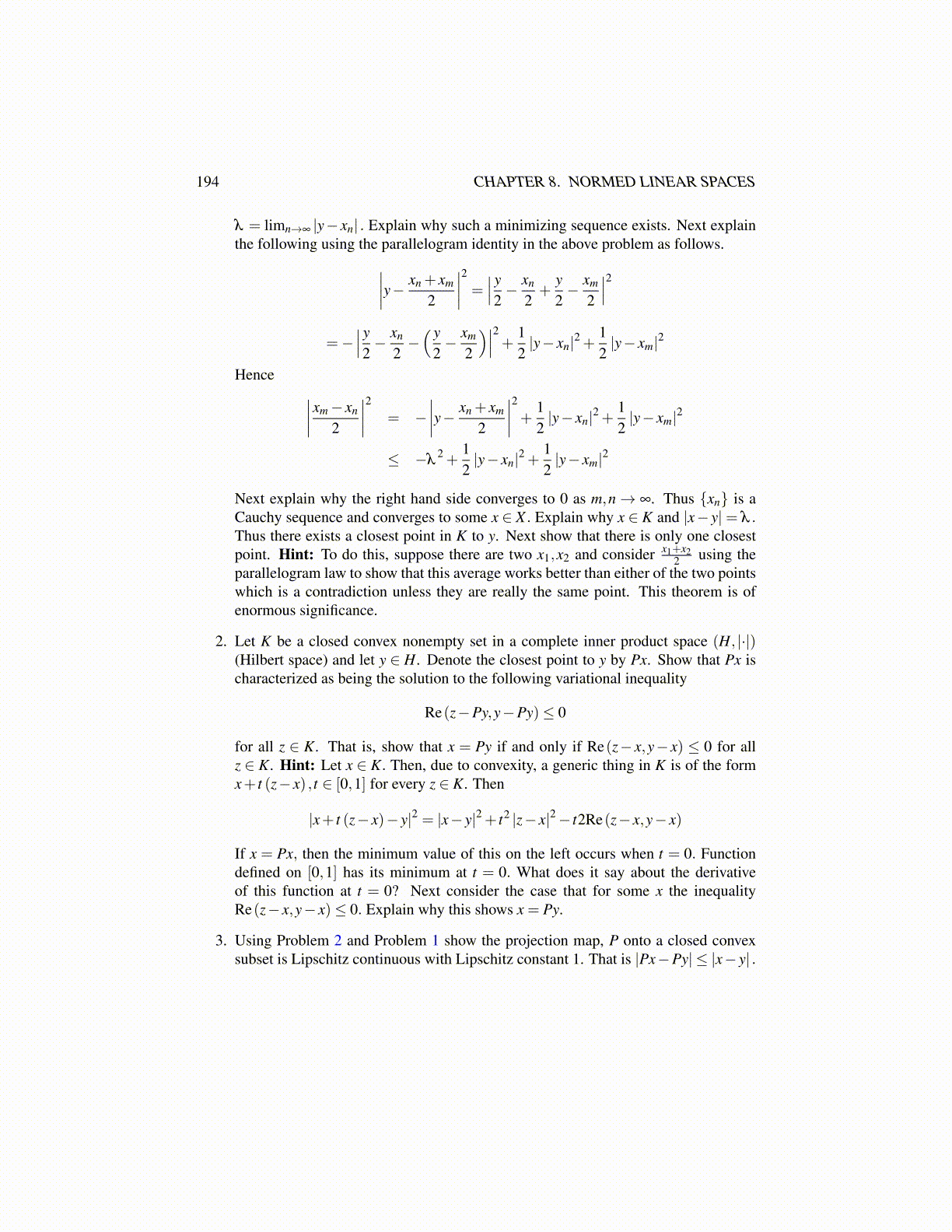
194 CHAPTER 8. NORMED LINEAR SPACES
λ = limn→∞ |y− xn| . Explain why such a minimizing sequence exists. Next explainthe following using the parallelogram identity in the above problem as follows.∣∣∣∣y− xn + xm
2
∣∣∣∣2 = ∣∣∣ y2 − xn
2+
y2− xm
2
∣∣∣2=−
∣∣∣ y2− xn
2−( y
2− xm
2
)∣∣∣2 + 12|y− xn|2 +
12|y− xm|2
Hence ∣∣∣∣xm− xn
2
∣∣∣∣2 = −∣∣∣∣y− xn + xm
2
∣∣∣∣2 + 12|y− xn|2 +
12|y− xm|2
≤ −λ2 +
12|y− xn|2 +
12|y− xm|2
Next explain why the right hand side converges to 0 as m,n→ ∞. Thus {xn} is aCauchy sequence and converges to some x ∈ X . Explain why x ∈ K and |x− y|= λ .Thus there exists a closest point in K to y. Next show that there is only one closestpoint. Hint: To do this, suppose there are two x1,x2 and consider x1+x2
2 using theparallelogram law to show that this average works better than either of the two pointswhich is a contradiction unless they are really the same point. This theorem is ofenormous significance.
2. Let K be a closed convex nonempty set in a complete inner product space (H, |·|)(Hilbert space) and let y ∈ H. Denote the closest point to y by Px. Show that Px ischaracterized as being the solution to the following variational inequality
Re(z−Py,y−Py)≤ 0
for all z ∈ K. That is, show that x = Py if and only if Re(z− x,y− x) ≤ 0 for allz ∈ K. Hint: Let x ∈ K. Then, due to convexity, a generic thing in K is of the formx+ t (z− x) , t ∈ [0,1] for every z ∈ K. Then
|x+ t (z− x)− y|2 = |x− y|2 + t2 |z− x|2− t2Re(z− x,y− x)
If x = Px, then the minimum value of this on the left occurs when t = 0. Functiondefined on [0,1] has its minimum at t = 0. What does it say about the derivativeof this function at t = 0? Next consider the case that for some x the inequalityRe(z− x,y− x)≤ 0. Explain why this shows x = Py.
3. Using Problem 2 and Problem 1 show the projection map, P onto a closed convexsubset is Lipschitz continuous with Lipschitz constant 1. That is |Px−Py| ≤ |x− y| .